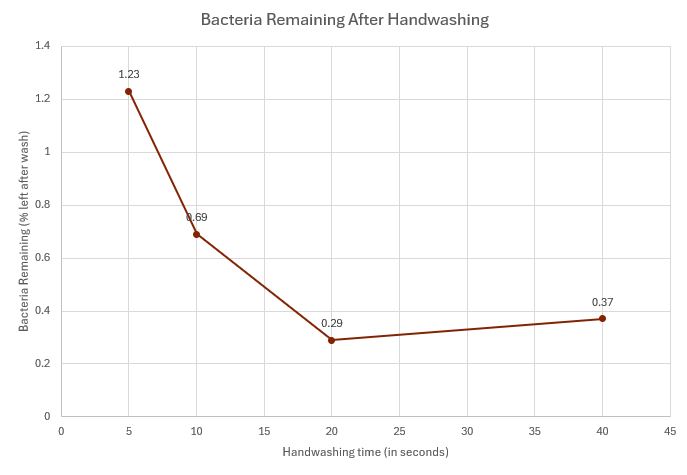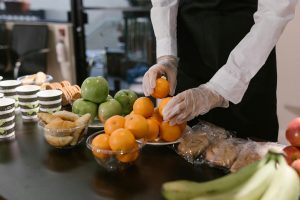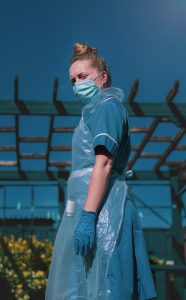9.3 Infection Prevention Processes
Hand Hygiene
Proper hand washing can reduce the spread of infection. Standards for handwashing have been developed by the World Health Organization. Studies have confirmed that twenty seconds of lather (soapy water contact) time is optimal.

Image Description
After 5 seconds 1.23% bacteria left.
After 10 seconds 0.69% bacteria left.
After 20 seconds 0.29% bacteria left.
After 40 seconds 0.37% bacteria left.
The difference between 5 seconds and 20 seconds was statistically significant. The differences between 5 and 10 and 5 and 40 seconds were not.
Standards for Hand Hygiene
- Wet hands with water and apply soap.
- Rub hands palm to palm.
- Rub left hand over right hand with interlaced fingers. Repeat with the right hand over the left hand.
- Rub again palm to palm with fingers interlaced.
- Rub the back of fingers opposing the palm with fingers interlocked. Repeat for each hand.
- Rub holding right thumb and then left thumb.
- Clean the tips of the fingers by rubbing them against the opposing palm.
- Rinse with running water.
Watch: WHO: How to handwash? With soap and water
Video: “WHO: How to handwash? With soap and water” by World Health Organization (WHO) [1:27] is licensed under the Standard YouTube License.Transcript and closed captions available on YouTube.
Masking
Studies have shown that masking can reduce the spread of transmission by up to 79% (Howard et al., 2021). This is a significant number when the goal is to protect people by breaking the chain of infection. There is a correct procedure for donning (putting on) and doffing (taking off) masks that ensure the most effective use of personal protective equipment.
Watch: Donning and Doffing Facial Protection – Mask Alone
Video: “Donning and Doffing Facial Protection – Mask alone” by mnhealth [1:34] is licensed under the Standard YouTube License.Transcript and closed captions available on YouTube.

Gloves
Gloves provide a barrier between infectious pathogens and any openings that they might find on the skin. They block the portal of entry: openings in the skin.

Gowns
Gowns provide an additional layer of protection by keeping infectious pathogens from travelling on clothing. Disposal gowns can be changed between jobs or between rooms.

